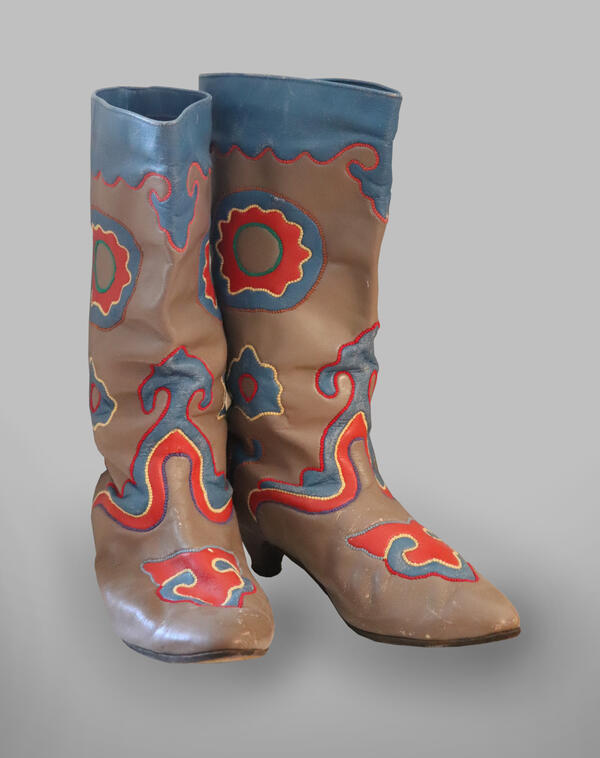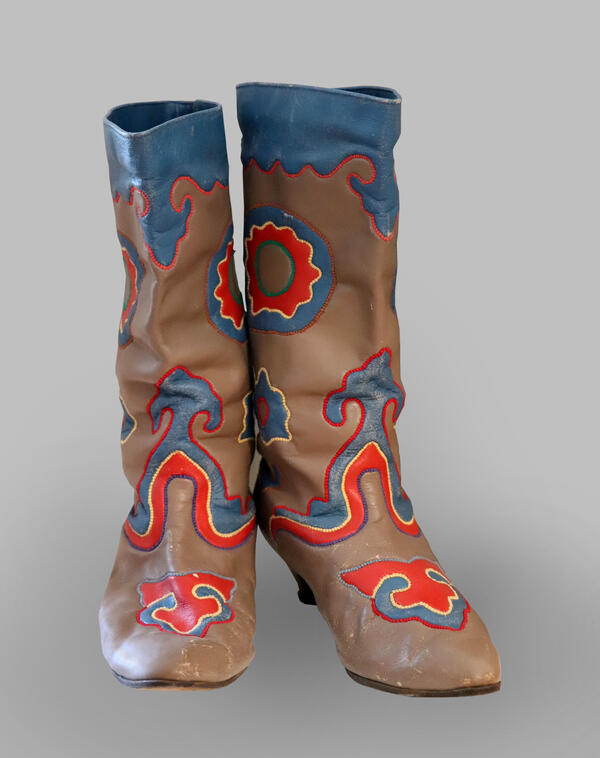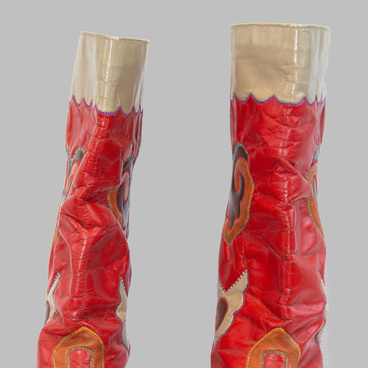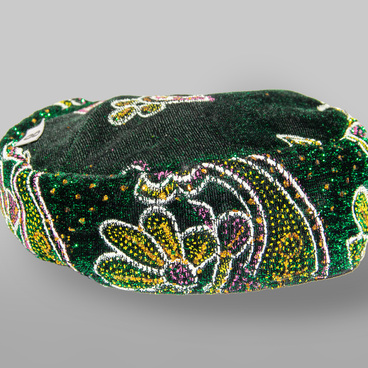Ichigi are amazingly beautiful, well-designed and functional Tatar boots. Ichigi are also known among other peoples of Siberia, the Far East and the Caucasus. These shoes are associated with the traditions of leather processing and the art of the nomadic peoples of Eurasia. These boots are widespread among the Tatars of different regions and are part of the national costume.
Tatars made ichigi at home. Starting from the 19th century, this craft became an organized trade, and manufactories were created. In Kazan, there were more than 30 leather industries, several tens of thousands of people were employed in the ichigi business, and the total production of leather mosaic shoes, according to some researchers, reached three million pairs a year.
In 1825, in the village of Embaevo, a leather enterprise was opened at the expense of the merchant Gabdulla Niyazov. It produced up to 4,000 pairs of leather shoes a year. Two types of leather were made: morocco — thin and soft multi-colored goatskin, and Russian leather (“yuft”) — thicker, but also soft cattle leather.
Single-color ichigi were not particularly original and were worn by most of the Turkic-Mongolian peoples. However, mosaic shoes were a specifically Tatar footwear. Patterns on ichigi have a certain meaning. They were made in ancient pagan traditions, when ornaments were read as texts. It has not been established when exactly the first Tatar patterned ichigi appeared. The oldest surviving ones date back to the 18th century, but scientists suggest that they existed much earlier.
Boots were sewn from multicolored soft leather. Some unknown ingenious master came up with the idea of filling the distance between the pieces of material with a twisted colored thread. Ichigi were decorated with leather patterns of different colors. The ornament was based on plant motifs: a tulip, a palm leaf, and a multi-petal rosette. Hearts were often depicted on girls’ ichigi — an ancient Bulgarian symbol of chastity and purity.
Tatars made ichigi at home. Starting from the 19th century, this craft became an organized trade, and manufactories were created. In Kazan, there were more than 30 leather industries, several tens of thousands of people were employed in the ichigi business, and the total production of leather mosaic shoes, according to some researchers, reached three million pairs a year.
In 1825, in the village of Embaevo, a leather enterprise was opened at the expense of the merchant Gabdulla Niyazov. It produced up to 4,000 pairs of leather shoes a year. Two types of leather were made: morocco — thin and soft multi-colored goatskin, and Russian leather (“yuft”) — thicker, but also soft cattle leather.
Single-color ichigi were not particularly original and were worn by most of the Turkic-Mongolian peoples. However, mosaic shoes were a specifically Tatar footwear. Patterns on ichigi have a certain meaning. They were made in ancient pagan traditions, when ornaments were read as texts. It has not been established when exactly the first Tatar patterned ichigi appeared. The oldest surviving ones date back to the 18th century, but scientists suggest that they existed much earlier.
Boots were sewn from multicolored soft leather. Some unknown ingenious master came up with the idea of filling the distance between the pieces of material with a twisted colored thread. Ichigi were decorated with leather patterns of different colors. The ornament was based on plant motifs: a tulip, a palm leaf, and a multi-petal rosette. Hearts were often depicted on girls’ ichigi — an ancient Bulgarian symbol of chastity and purity.




